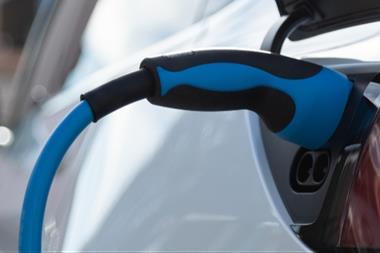The new Fuel Vapour Recovery Stage II EU directive is set to come into force on January 1, 2012, following consultation with local authorities and industry bodies, in particular RMI Petrol.
Environment minister John Taylor confirmed that the new requirements would apply to all but the smallest new petrol stations from 2012; to larger existing petrol stations from the end of 2018; and to most existing petrol stations that undergo a major refurbishment from 2012.
Around 25% of the largest existing petrol stations already meet the requirements of the new directive, which is aimed at ensuring recovered fuel vapour is converted back into petrol.
He also sought to reassure concerned retailers that fulfilling the requirements of the directive would not result in any site closures: “I know concerns have been raised about how the changes will impact on existing small petrol stations,” he said.
“It has been mentioned, for example, that the changes might result in the closure of rural petrol stations. This will not be the case.
“The Government fully recognises the social importance of smaller petrol stations and particularly those within rural communities. This is why I want to assure you that we don’t expect any existing petrol stations to have to close as a result of the changes.
“The new requirements will only apply to existing smaller petrol stations if they undergo a major refurbishment.”
He said the guidance makes it clear that that a forecourt will need to be comprehensively upgraded to trigger the need for the directive to be implemented.
“Partially replacing pipework or just replacing some petrol dispensers is very unlikely to be regarded as a major refurbishment,” he stressed. “Indeed we fought hard in the EU to leave some flexibility for issuing just this sort of pragmatic guidance.”
He also thanked RMIP and other trade bodies for working with the Department of Environmental and Rural Affairs (Defra), “to ensure we have emerged with a workable package that does not impose undue burdens”.
The key changes include:
· PVRII to be fitted to all service stations with a petrol throughput of >3000m3 by end-2018.
· new service stations with an actual or intended annual throughput of >500m3 to be equipped with PVRII from January 2012.
· existing service stations with a actual or intended annual throughput of >500m3 to be equipped with PVRII if they undergo "major refurbishment" from January 2012.
· substitute >100m3 for 500m3 in the above bullets where the service station is situated under permanent living quarters or working areas.
· the above bullets do not apply to service stations exclusively used in association with the construction and delivery of new motor vehicles.
· petrol vapour capture efficiency to be 85% or more as certified by the manufacturer in accordance with relevant European technical standards or type approval procedures or, if there are no such standards or procedures, with any relevant national standard.
· where the recovered petrol vapour is transferred to a storage tank at the service station, the vapour/petrol ratio must be equal to or greater than 0,95 but less than or equal to 1,05.
· a sign or sticker, or other notification, must be displayed on, or in the vicinity of, the petrol dispenser informing consumers that a PVRII petrol vapour recovery system has been installed (Article 5.3).
For guidance on the new directive go to the defra website: http://www.defra.gov.uk/environment/quality/industrial/eu-international/petrol-vapour-recovery-directives






























No comments yet